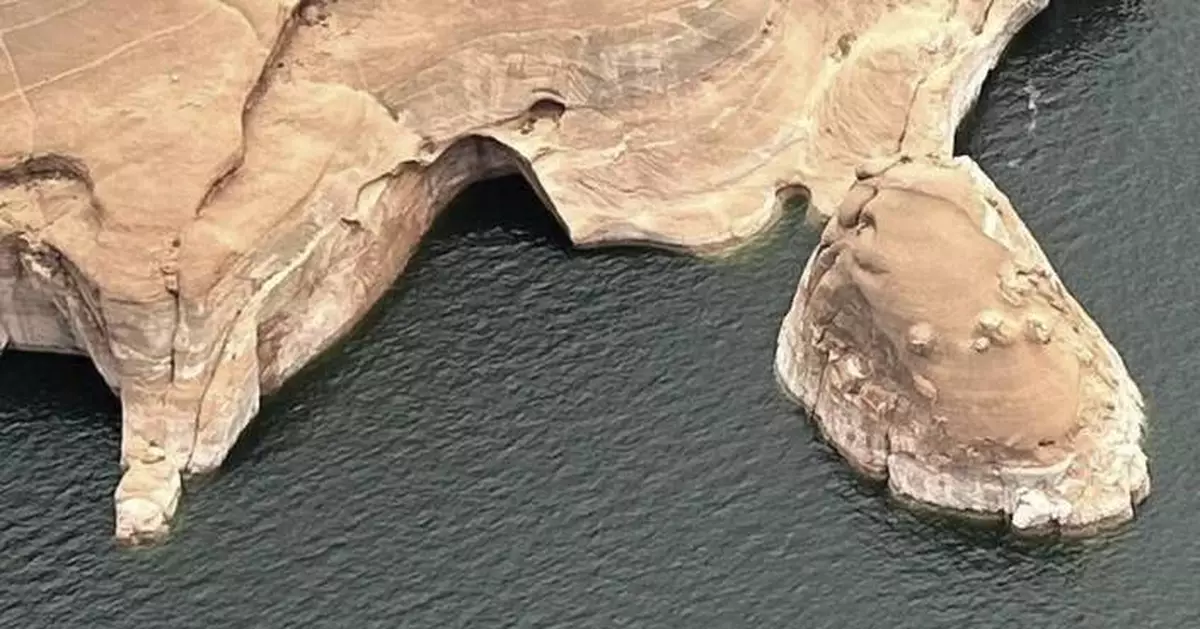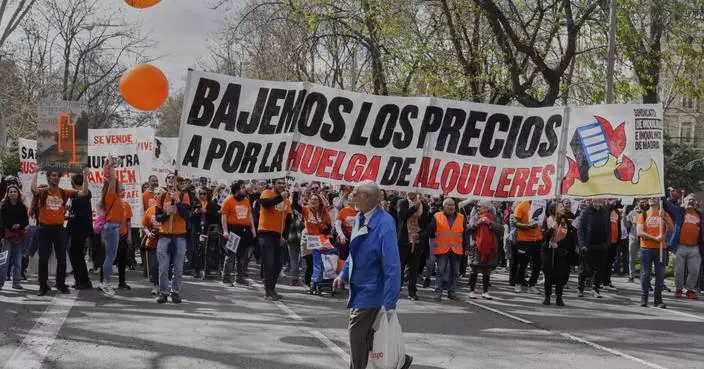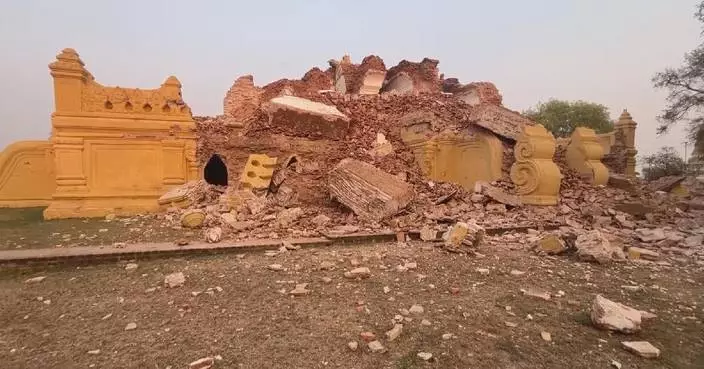PAGE, Ariz. (AP) — A large geological feature in southern Utah known as the “Double Arch,” the “Hole in the Roof” and sometimes the “Toilet Bowl” has collapsed, National Park Service officials said Friday. No injuries were reported.
The popular arch in the Glen Canyon National Recreation Area fell Thursday, and park rangers suspect changing water levels and erosion from waves in Lake Powell contributed to its demise.
Michelle Kerns, superintendent of the recreation area that spans the border of Utah and Arizona, said the collapse serves as a reminder to protect the mineral resources that surround the lake.
“These features have a life span that can be influenced or damaged by manmade interventions,” she said in a statement.
The arch was formed from 190 million-year-old Navajo sandstone originating in the late Triassic to early Jurassic periods. The fine-grained sandstone has endured erosion from weather, wind and rain, the statement said.
The recreation area encompasses nearly 2,000 square miles (5,180 square kilometers) and is popular among boaters and hikers.
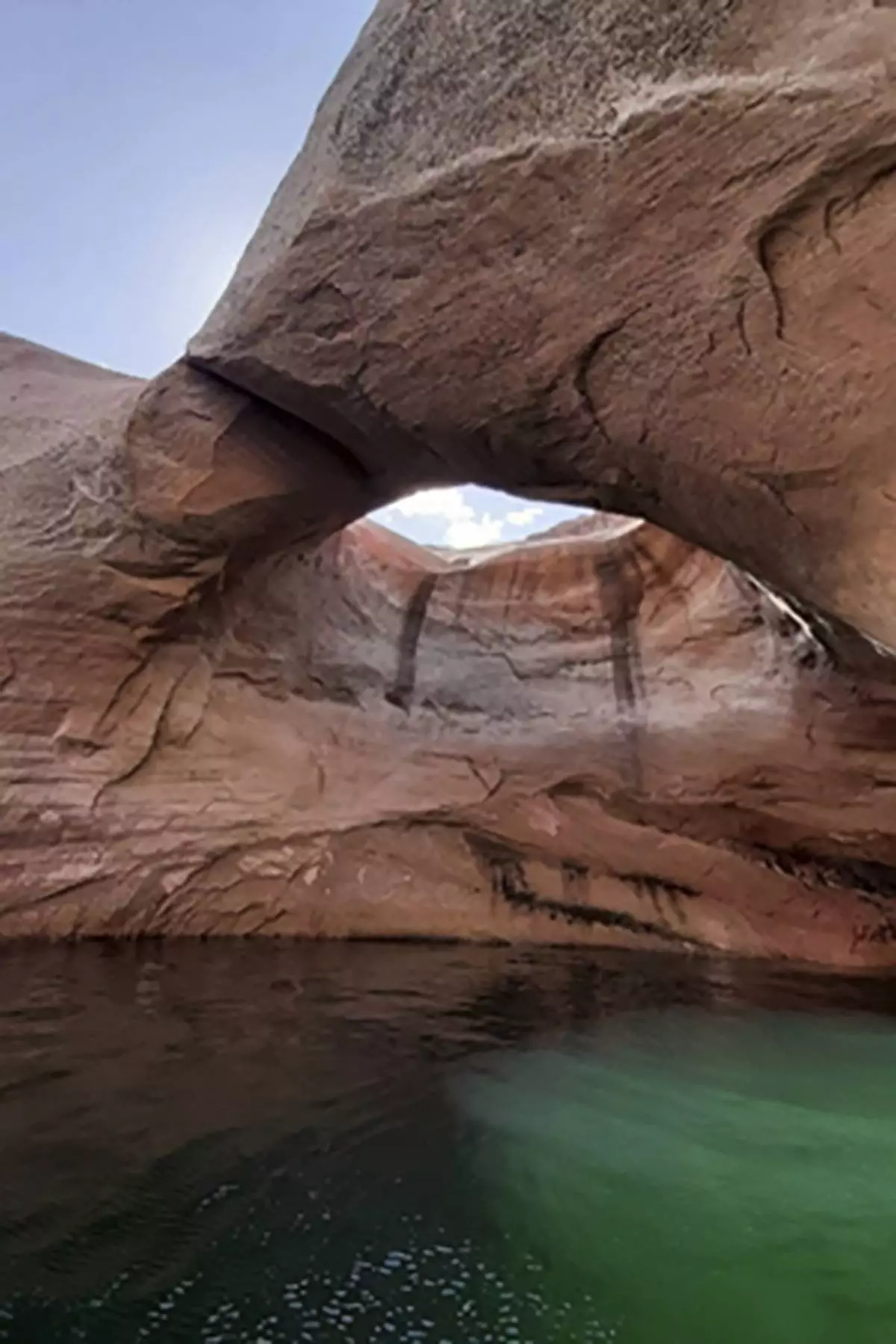
This undated photo provided by the National Park Service shows Double Arch prior to collapse in Rock Creek Bay of the Glen Canyon National Recreation Area, Utah. (National Park Service via AP)
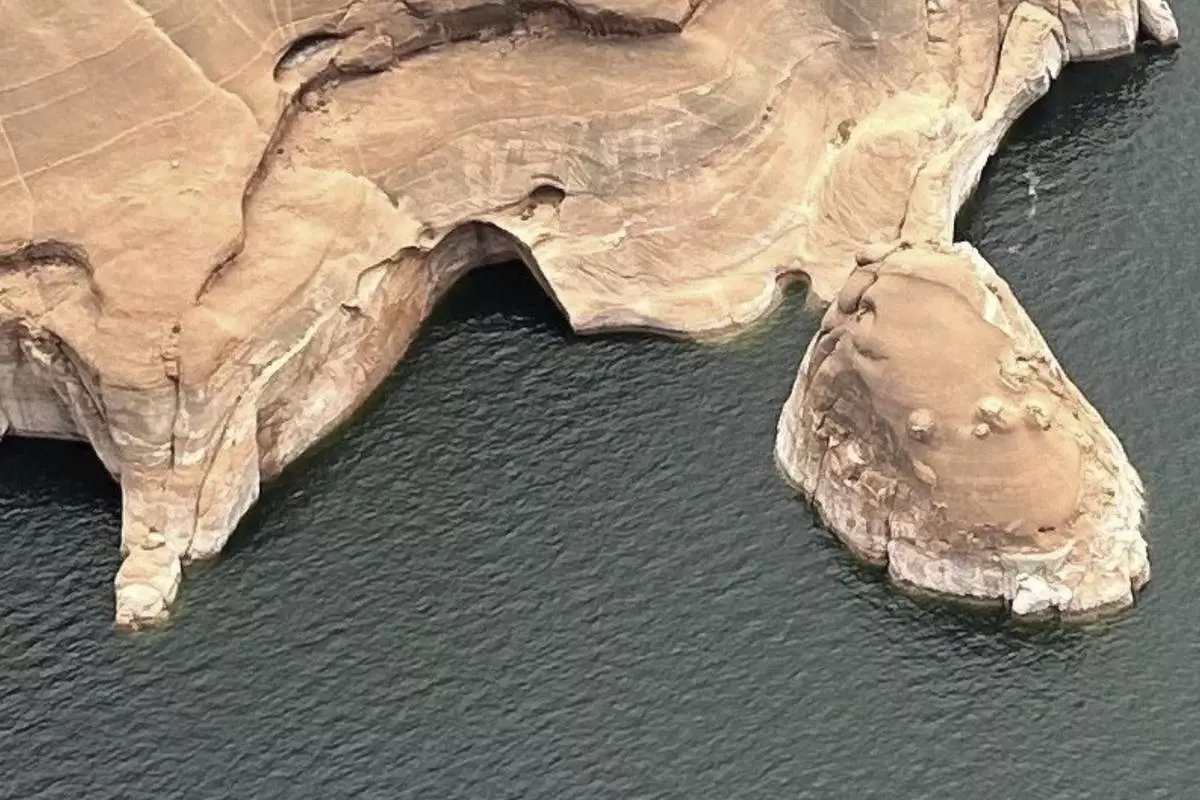
This photo provided by the National Park Service shows the Double Arch, center, after the collapse, Friday, August 9th, 2024, in Rock Creek Bay of the Glen Canyon National Recreation Area, Utah. (Jacob E. Ohlson/National Park Service via AP)
HOPKINSVILLE, Ky. (AP) — Another round of torrential rain and flash flooding was coming Saturday for parts of the South and Midwest already heavily waterlogged by days of severe storms that also spawned some deadly tornadoes.
Round after round of heavy rains have pounded the central U.S., rapidly swelling waterways and prompting a series of flash flood emergencies in Missouri, Texas and Arkansas. The National Weather Service said 45 river locations in multiple states were expected to reach major flood stage, with extensive flooding of structures, roads and other critical infrastructure possible.
Many communities on Saturday were surveying the aftermath of tornadoes that destroyed entire neighborhoods and killed at least seven people, and the weather service warned that more twisters were possible in places this weekend. An additional weather-related death was also reported Friday — 9-year-old boy was swept away in flooding and killed, Kentucky’s governor said.
And interstate commerce is affected — the extreme flooding across a corridor that includes Louisville, Kentucky and Memphis — which have major cargo hubs — could lead to shipping and supply chain delays, said Jonathan Porter, chief meteorologist at AccuWeather.
The outburst comes at a time when nearly half of NWS forecast offices have 20% vacancy rates after Trump administration job cuts — twice that of just a decade ago.
Downtown Hopkinsville, Kentucky, reopened early Saturday after floodwaters from the Little River receded, giving a much needed reprieve, but still more rainfall was on its way Saturday and Sunday, Mayor James R. Knight Jr. said.
Torrential rain since Wednesday had turned the downtown of the city of 31,000 into a lake Friday before the bands of weather shifted slightly.
“We got a little rain but most of it went north of us,” Knight said Saturday. “Thank goodness on that. Gave us a little break.”
Flash flood emergencies continued to be issued Saturday across Arkansas, Mississippi and Tennessee, with more heavy rains and damaging winds in the mix. Weather officials in Tennessee, at least, predicted that the crescendo of severe weather risks would subside after Sunday.
“The finish line is in sight!” NWS Nashville posted on social media.
The worst of it was expected Saturday afternoon and evening in Hopkinsville, where predictions of another 3-4 inches of rain had people filling more sandbags to hold back another potential surge of floodwaters, Christian County Judge-Executive Jerry Gilliam said Saturday.
“We anticipate this water coming back quickly if it comes down quickly,” he said. “There are supposed to be three or four bursts of heavy rains throughout the day.”
A light drizzle was falling on the city as he spoke. Local jail inmates were filling sandbags, and officials allotted 20 bags for each resident, he said.
Hundreds of Kentucky roads were impassable Friday because of floodwaters, downed trees or mud and rock slides, and the number of closures were likely to increase with more rain Saturday, said Kentucky Gov. Andy Beshear.
Flash flooding is particularly worrisome in rural Kentucky where water can rush off the mountains into the hollows. Less than four years ago, dozens died in flooding in the eastern part of the state.
Swollen rivers and tributaries also swamped some parts in Ohio on Friday, and Gov. Mike DeWine said about 70 roads were closed. The southern half of the state was expected to see moderate flooding, which has not happened in four years, he added.
Forecasters attributed the violent weather to warm temperatures, an unstable atmosphere, strong wind shear and abundant moisture streaming from the Gulf.
At least two reports of observed tornadoes were noted Friday evening in Missouri and Arkansas, according to the NWS. One, near Blytheville, Arkansas, lofted debris at least 25,000 feet (7.6 kilometers) high, according to weather service meteorologist Chelly Amin. The state’s emergency management office reported damage in 22 counties from tornadoes, wind, hail and flash flooding.
Tennessee Gov. Bill Lee said entire neighborhoods in the hard-hit town of Selmer were “completely wiped out,” after it was hit by a tornado with winds estimated by the NWS of up to 160 mph (257 kph). Advance warning of storms likely saved lives as hundreds of people sheltered at a courthouse, the governor said.
Mississippi's governor said at least 60 homes were damaged. And in far western Kentucky, four people were injured while taking shelter in a vehicle under a church carport, according to the emergency management office in Ballard County.
Schreiner reported from Shelbyville, Kentucky. Associated Press writers Andrew DeMillo in Little Rock, Arkansas; Jonathan Mattise in Nashville, Tennessee; Adrian Sainz in Memphis, Tennessee; Jeff Martin in Marietta, Georgia; Obed Lamy in Hopkinsville; John Raby in Charleston, West Virginia; and Hallie Golden in Seattle contributed.

The rising Whitewater River overflows its banks at Riverview Park on Friday, April 4, 2025, in Harrison, Ohio. (AP Photo/Carolyn Kaster)
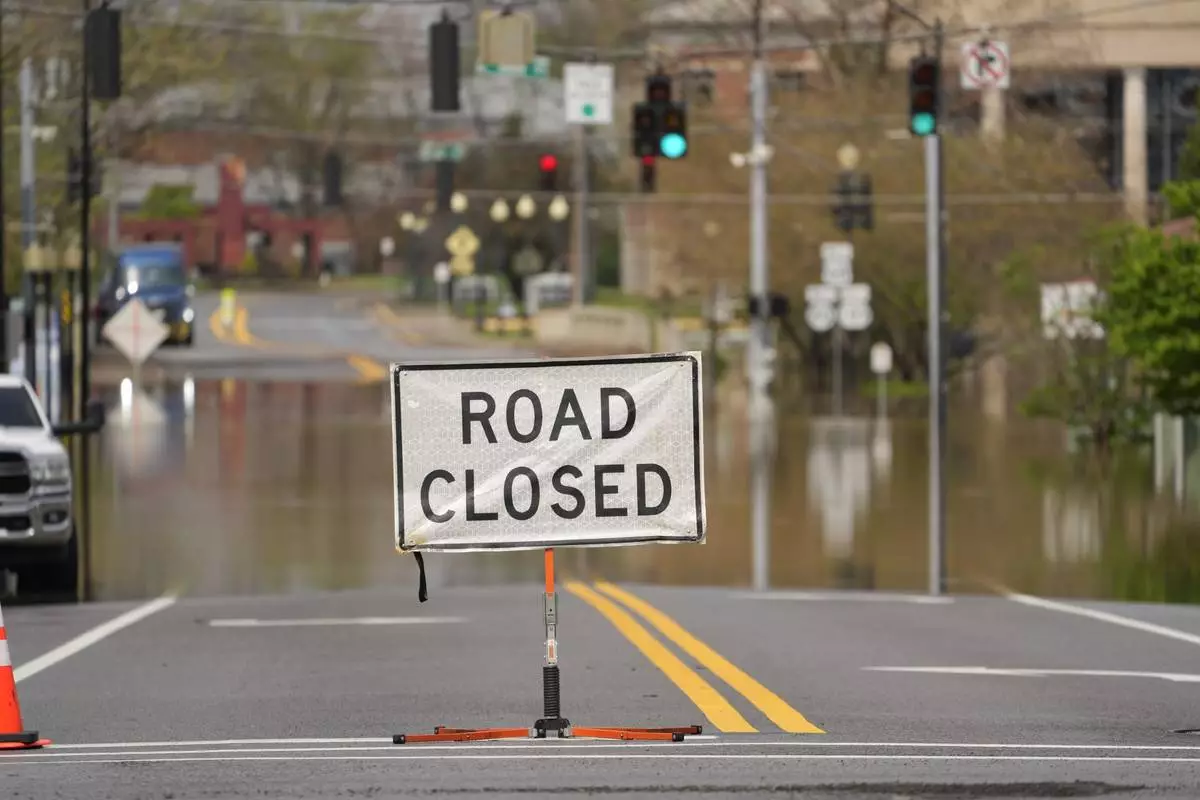
A street is closed off due to flood waters in Hopkinsville, Ky., Friday, April 4, 2025. (AP Photo/George Walker IV)
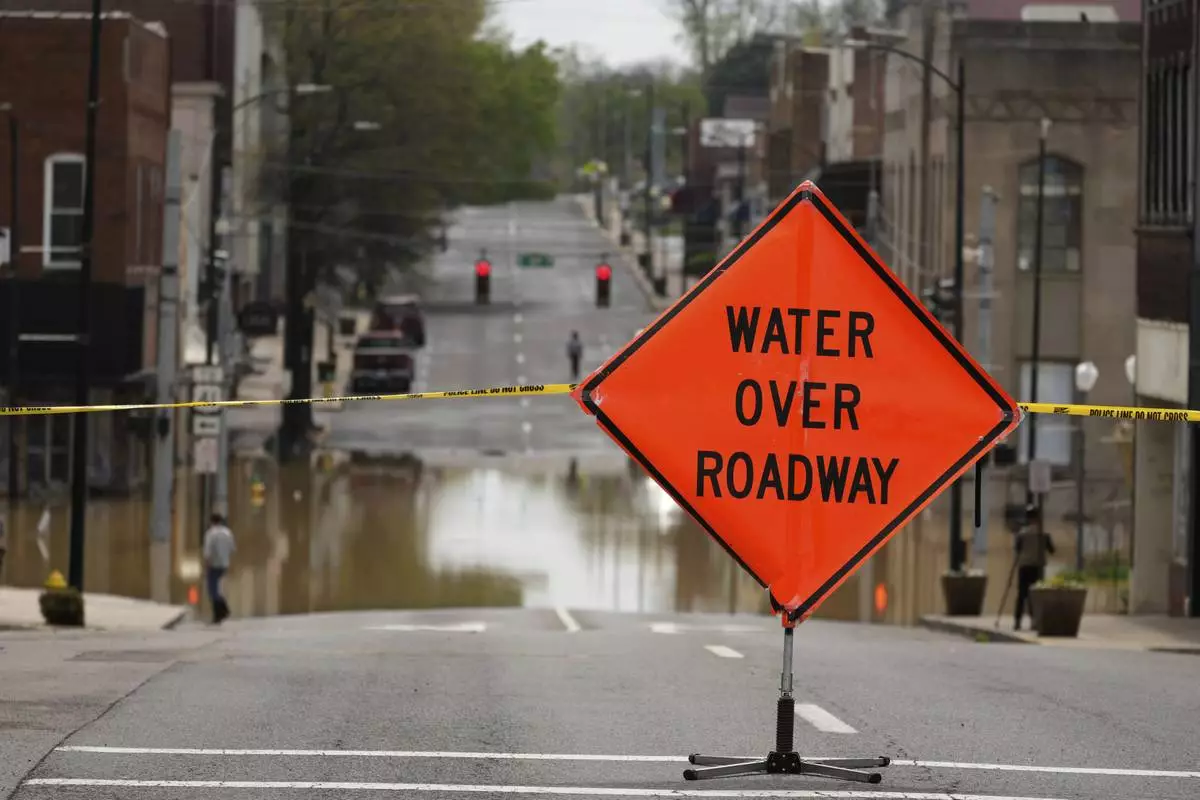
A street is closed off due to flood waters in Hopkinsville, Ky., Friday, April 4, 2025. (AP Photo/George Walker IV)
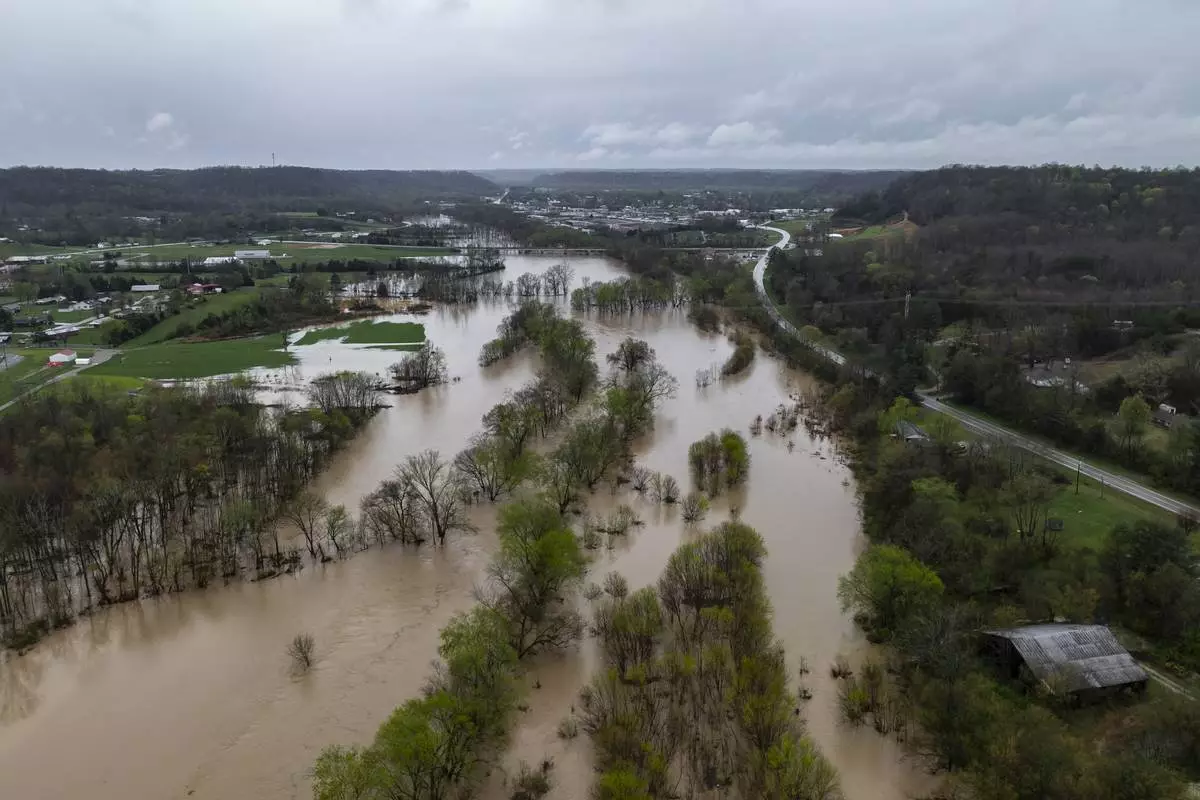
The Green River floods in Casey County, Ky., on Friday, April 4, 2025. (Ryan C. Hermens/Lexington Herald-Leader via AP)
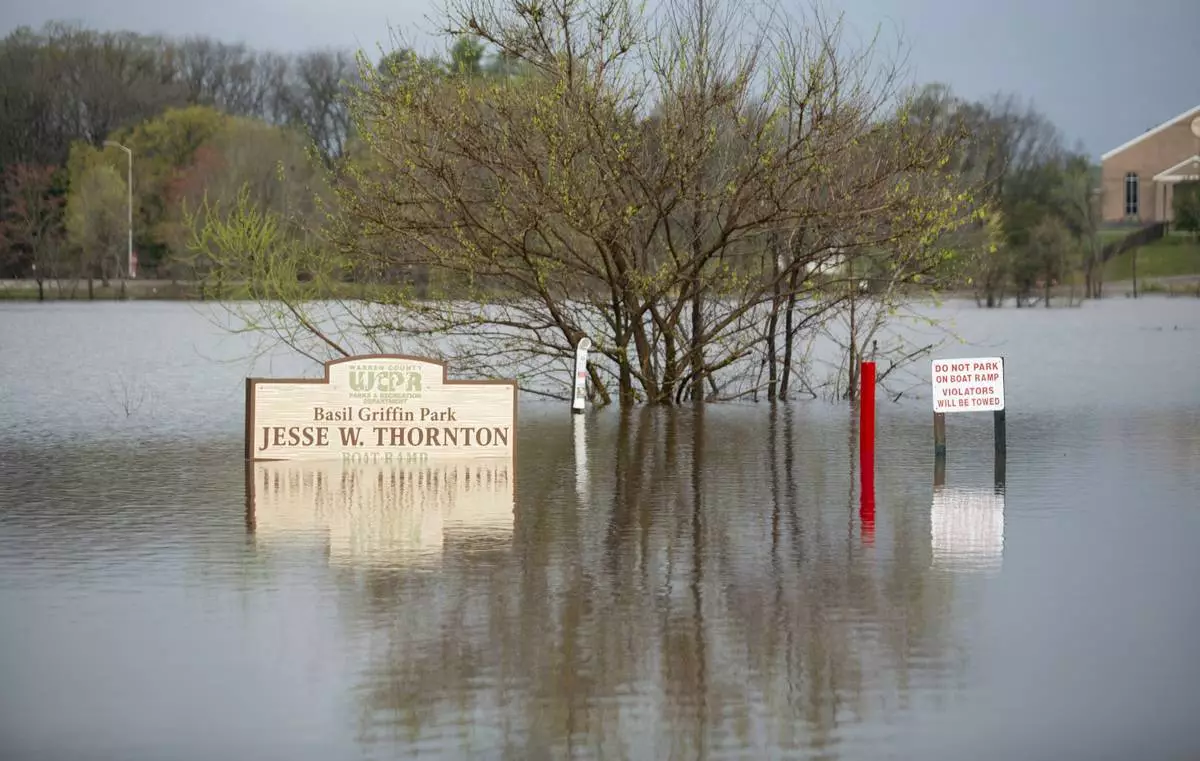
Signs at Basil Griffin Park in Bowling Green, Ky., stand in flooded waters on Friday, April 4, 2025, after excessive rainfall Thursday into Friday drenched southcentral Kentucky with more than four and a half inches of rain. (Grace McDowell /Daily News via AP)

Caution tape is placed in MacGregor Park on the banks of the Cumberland River in Clarksville Tenn., Friday, April 4, 2025. (AP Photo/George Walker IV)
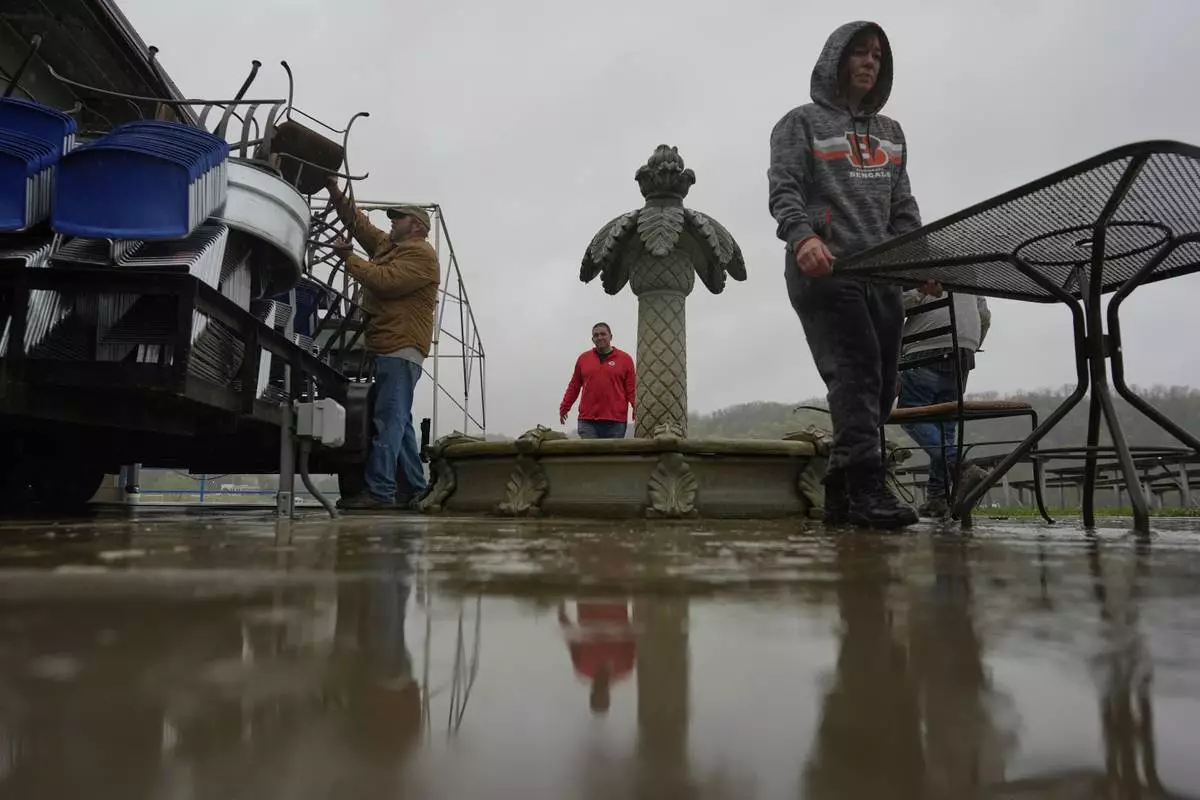
Drew's on the River Sports Bar and Grill manager, Carrie Haines, right, Frank left, and Steve Schmidt son of owner Ron Schmidt, center load furnature on to trailer in the rain as the Ohio River rises, Friday, April 4, 2025, in Cincinnati. (AP Photo/Carolyn Kaster)
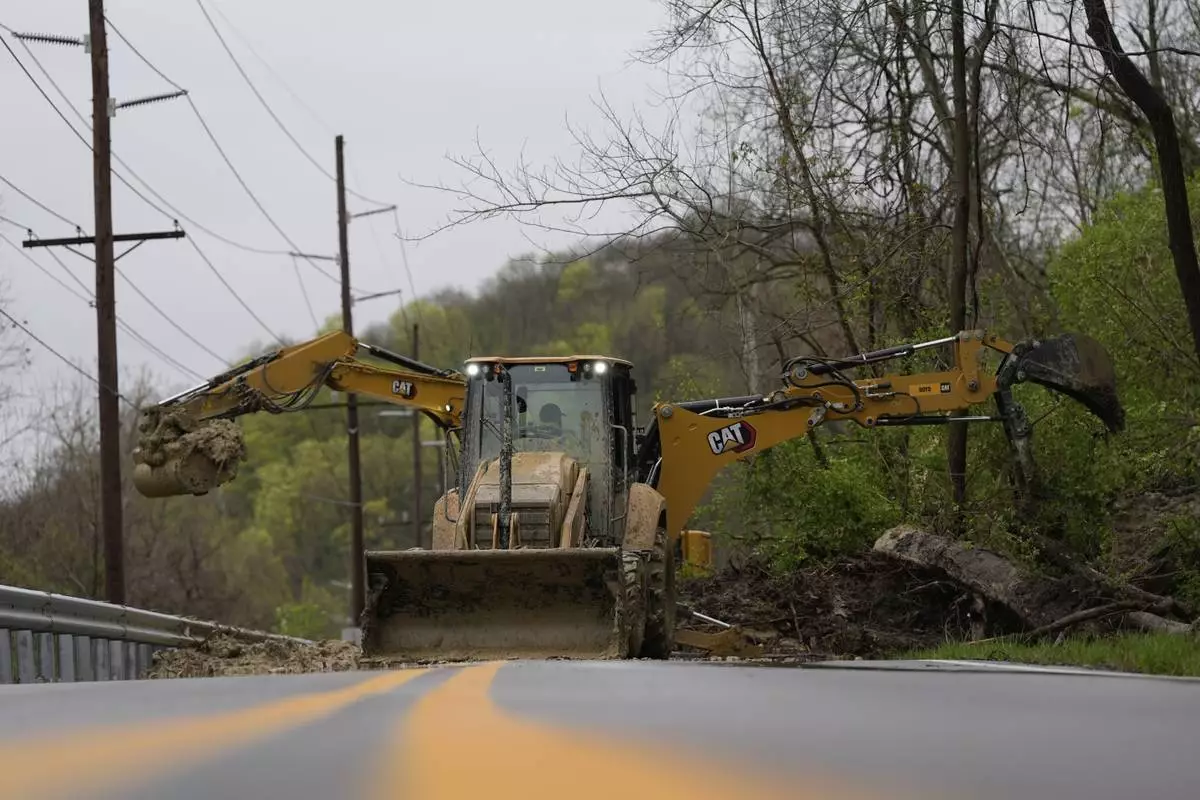
Workers clear landslide debris, caused by heavy rains overnight, from Mary Ingles Highway, Friday, April 4, 2025, in Newport, Ky. (AP Photo/Carolyn Kaster)
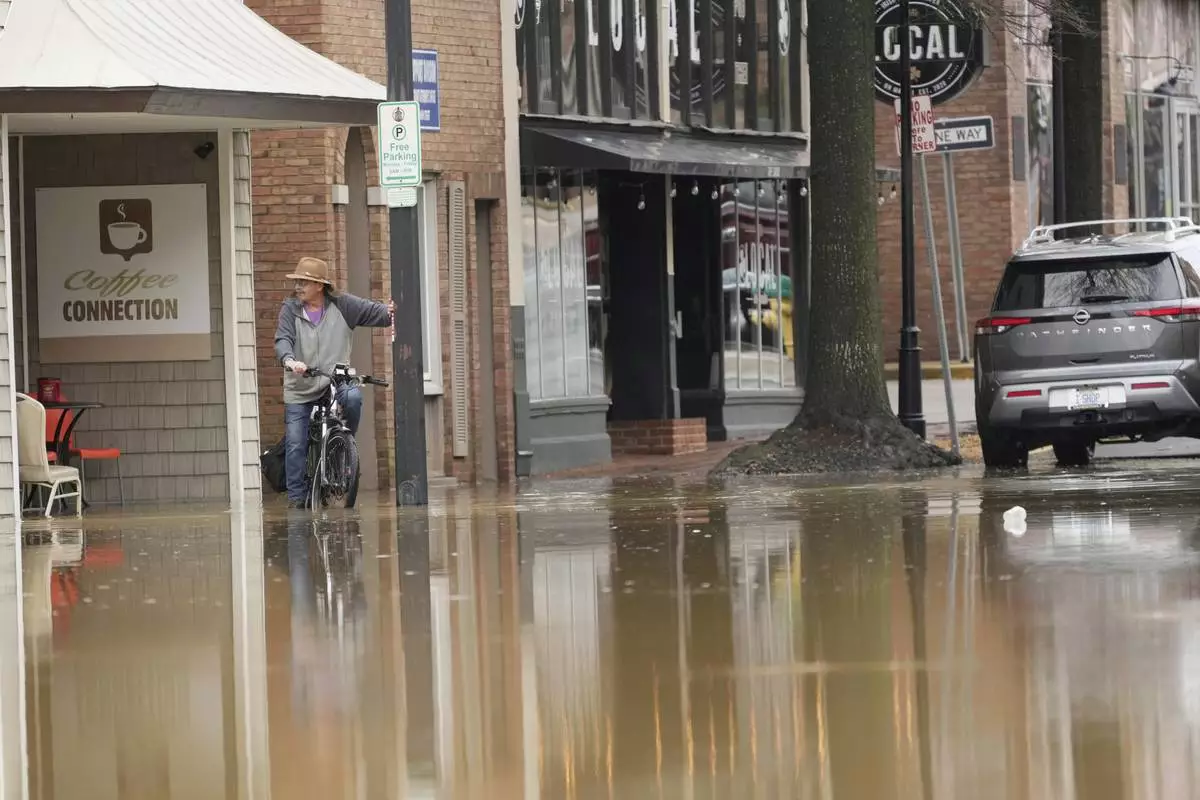
A person rides a bike in a flooded street in Hopkinsville, Ky., Friday, April 4, 2025. (AP Photo/George Walker IV)
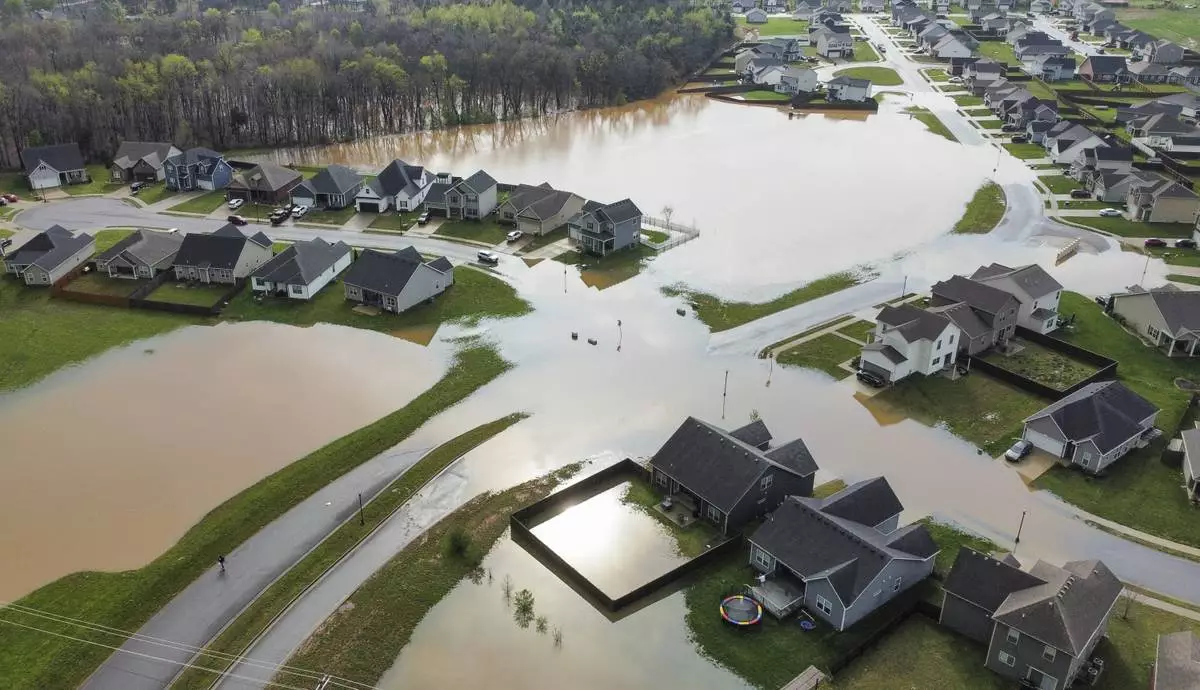
Flood waters cover the entryway to the Weather Stone subdivision off Russellville Road in Bowling Green, Ky., on Friday, April 4, 2025, after excessive rainfall Thursday into Friday drenched southcentral Kentucky with more than four and a half inches of rain. (Grace McDowell /Daily News via AP)
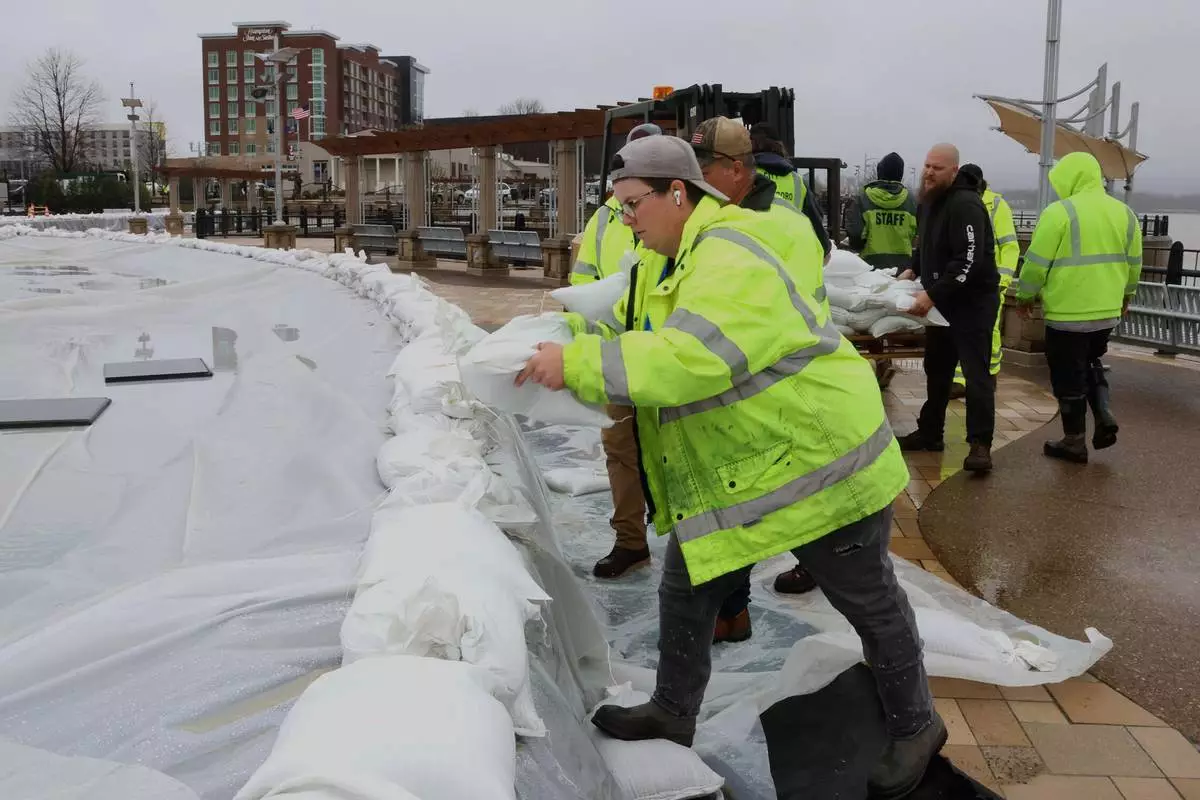
City of Owensboro workers put sandbags to protect the fountains in preparation for flooding of the Ohio River in Smothers Park in Owensboro, Ky., on Friday, April 4, 2025. (Alan Warren/The Messenger-Inquirer via AP)
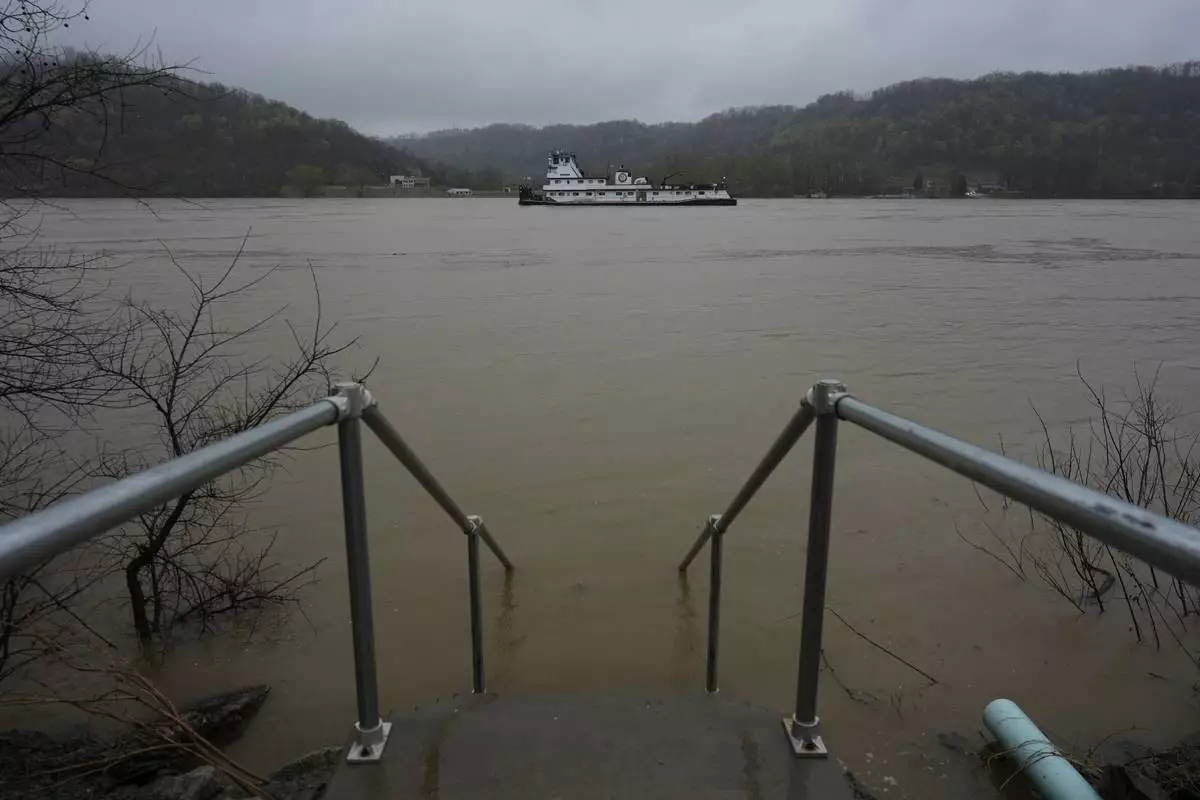
Stairs vanish into the rising Ohio River in front of Drew's on the River Sports Bar and Grill, Friday, April 4, 2025, in Cincinnati. (AP Photo/Carolyn Kaster)
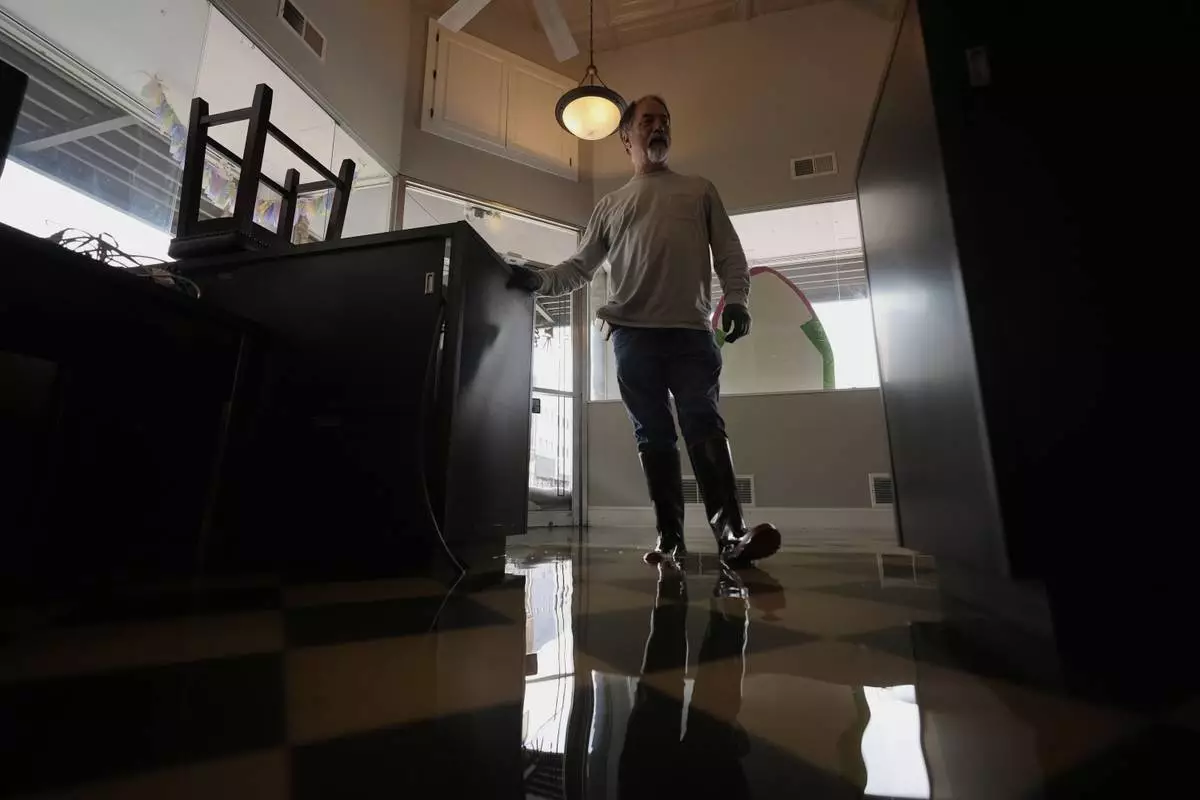
Tony Kirves prepares for flooding inside this photography studio in Hopkinsville, Ky., Friday, April 4, 2025. (AP Photo/George Walker IV)
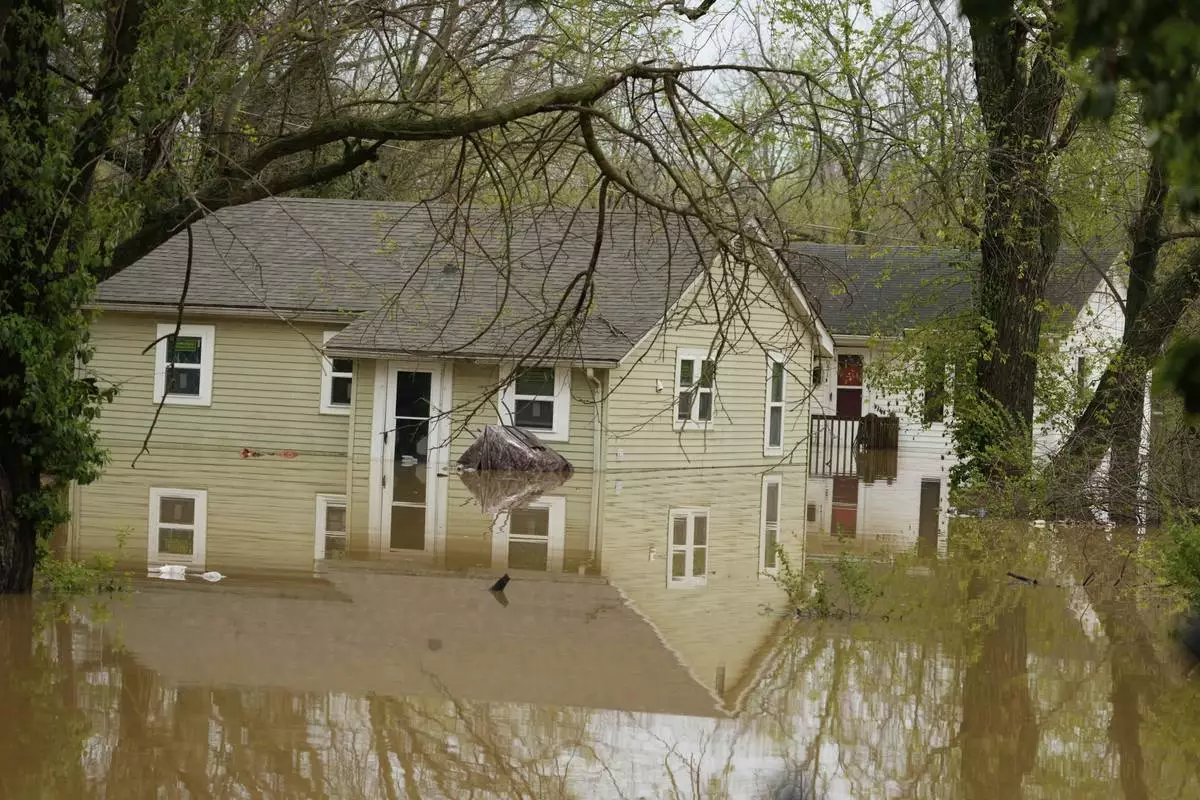
Flood waters rise around homes on Bell Street in Hopkinsville, Ky., Friday, April 4, 2025. (AP Photo/George Walker IV)

Floodwaters cover Kentucky Route 39 in Lincoln County, Ky., on Friday, April 4, 2025. (Ryan C. Hermens/Lexington Herald-Leader via AP)
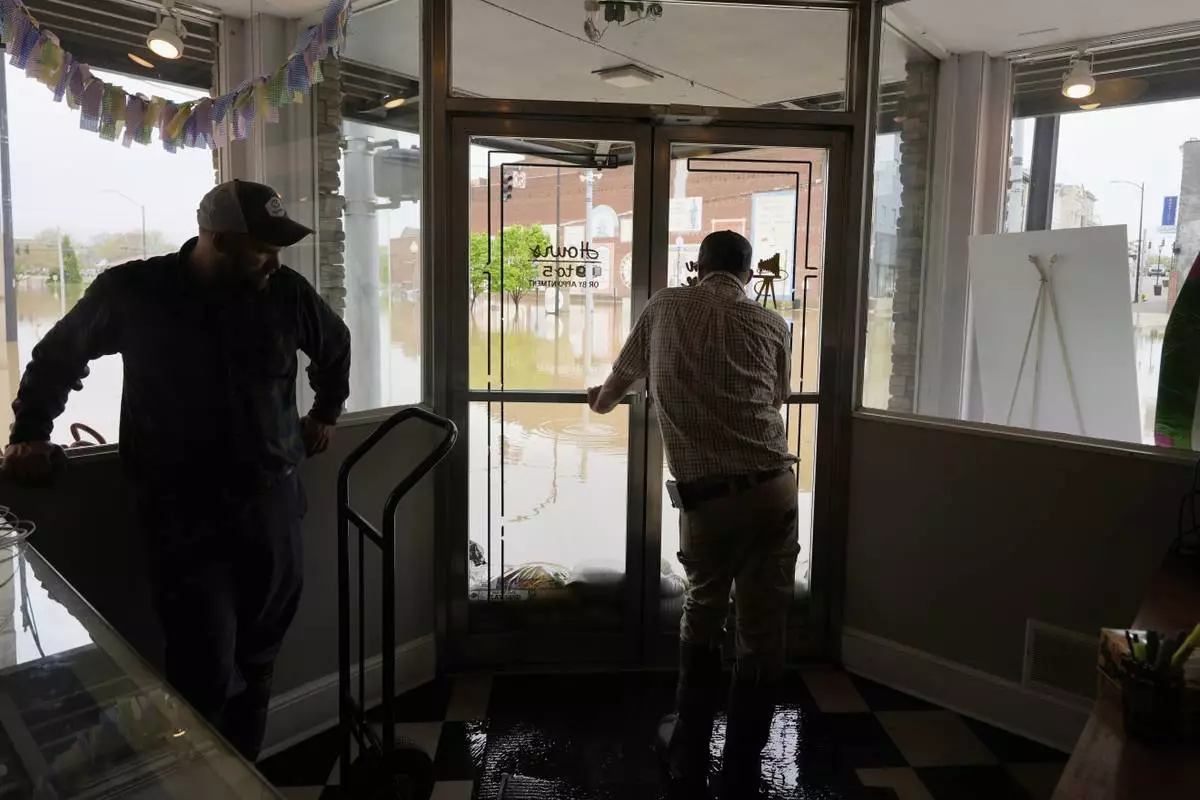
Brandon Sanderson, left, Josh Brashears set up sandbags after flooding in Hopkinsville, Ky., Friday, April 4, 2025. (AP Photo/George Walker IV)
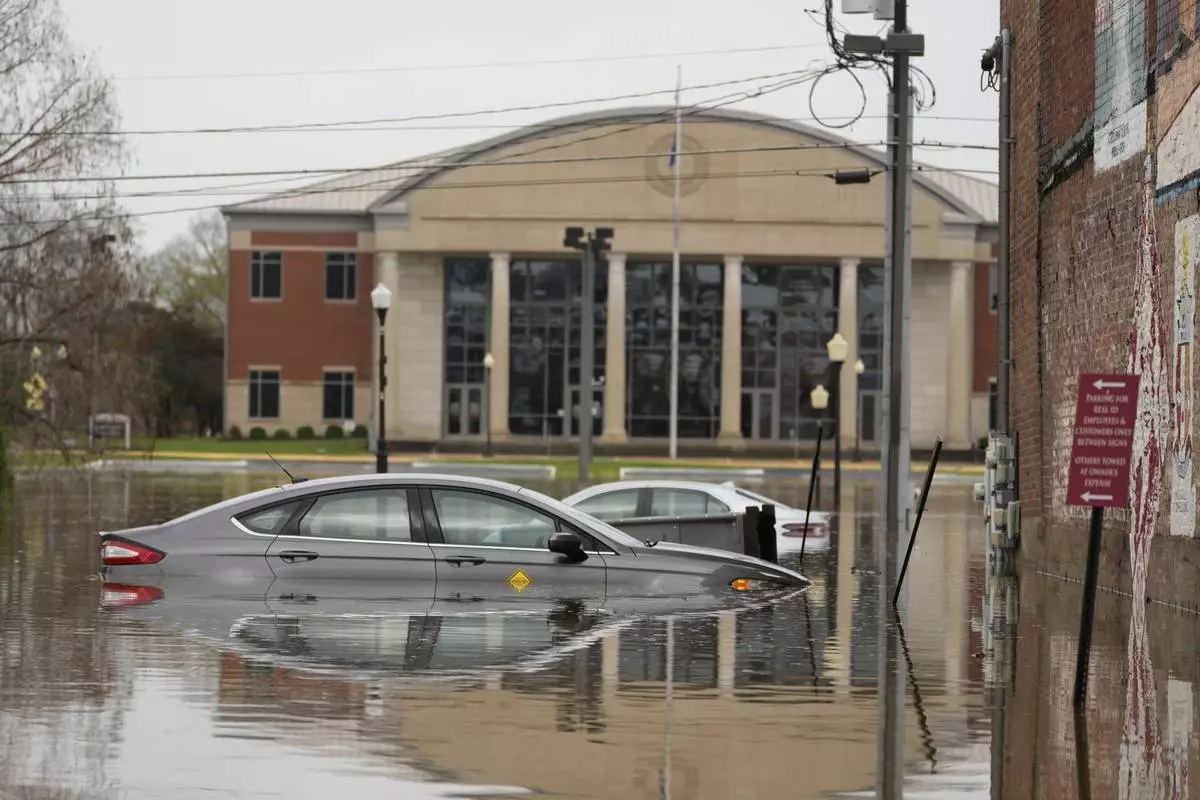
Cars sit in a flooded street in Hopkinsville, Ky., Friday, April 4, 2025. (AP Photo/George Walker IV)
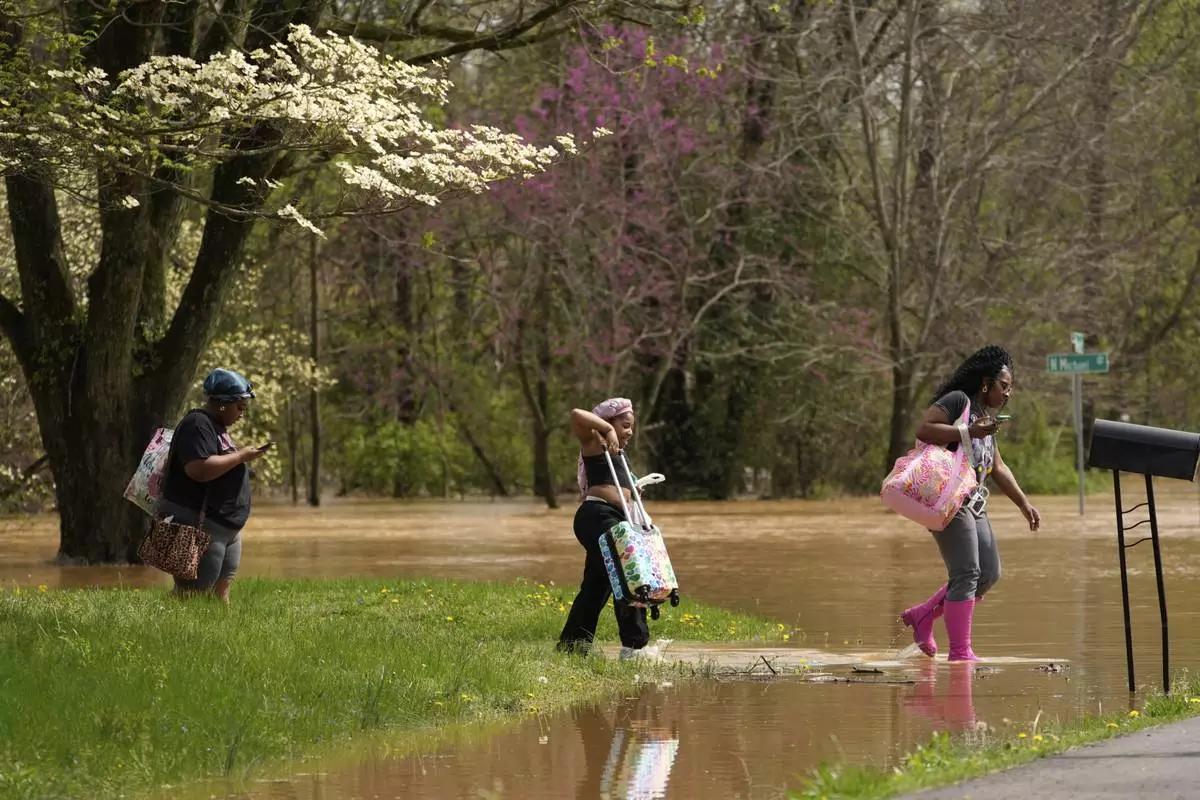
Marquetta Wheeler, right, with Samaria Williams and Jemaria Shaw walk through flood waters as they leave their home on Marietta Drive in Hopkinsville, Ky., Friday, April 4, 2025. (AP Photo/George Walker IV)
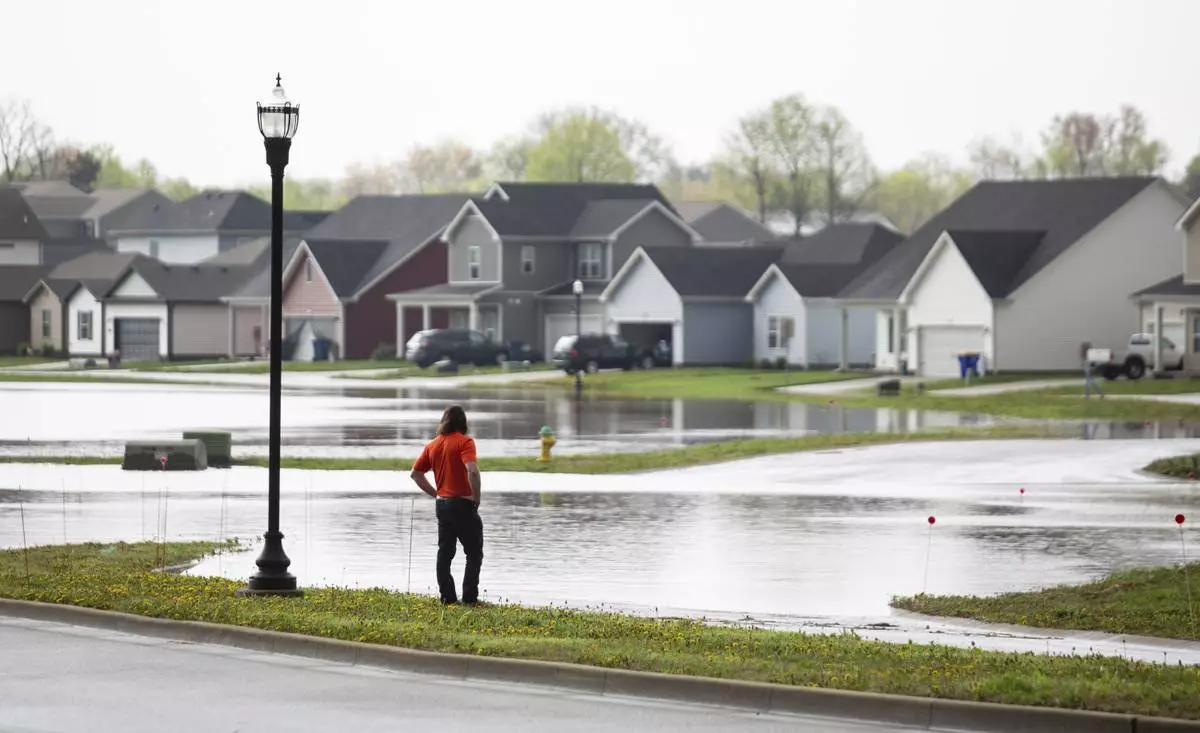
Floodwaters cover the entryway to the Weather Stone subdivision off Russellville Road in Bowling Green, Ky., on Friday, April 4, 2025. (Grace McDowell/Daily News via AP)
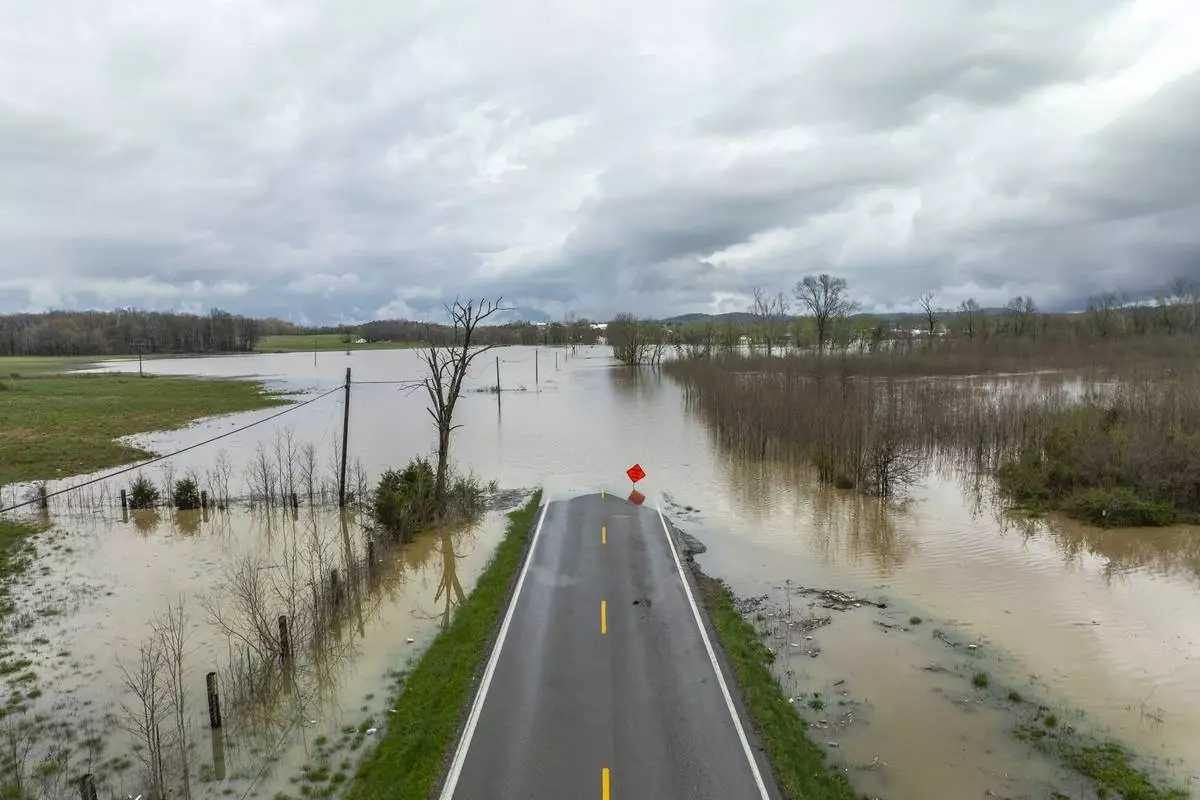
Floodwaters cover Kentucky Route 39 in Lincoln County, Ky., on Friday, April 4, 2025. (Ryan C. Hermens/Lexington Herald-Leader via AP)




